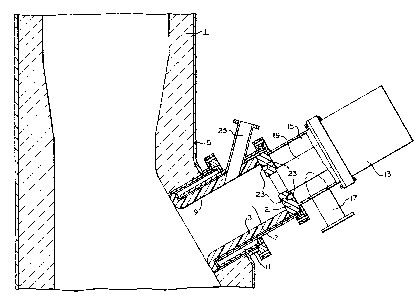Some of the information on this Web page has been provided by external sources. The Government of Canada is not responsible for the accuracy, reliability or currency of the information supplied by external sources. Users wishing to rely upon this information should consult directly with the source of the information. Content provided by external sources is not subject to official languages, privacy and accessibility requirements.
Any discrepancies in the text and image of the Claims and Abstract are due to differing posting times. Text of the Claims and Abstract are posted:
| (12) Patent: | (11) CA 1302518 |
|---|---|
| (21) Application Number: | 1302518 |
| (54) English Title: | PLASMA FIRED FEED NOZZLE |
| (54) French Title: | INJECTEUR DE CHAUFFE AU PLASMA |
| Status: | Term Expired - Post Grant |
| (51) International Patent Classification (IPC): |
|
|---|---|
| (72) Inventors : |
|
| (73) Owners : |
|
| (71) Applicants : |
|
| (74) Agent: | SMART & BIGGAR LP |
| (74) Associate agent: | |
| (45) Issued: | 1992-06-02 |
| (22) Filed Date: | 1988-05-06 |
| Availability of licence: | N/A |
| Dedicated to the Public: | N/A |
| (25) Language of filing: | English |
| Patent Cooperation Treaty (PCT): | No |
|---|
| (30) Application Priority Data: | ||||||
|---|---|---|---|---|---|---|
|
9 53,093
ABSTRACT OF THE DISCLOSURE
A plasma feed nozzle 3 for a furnace 1 which has
a tubular mixing chamber 7 open at one end to the furnace,
a plasma torch 13 which provides superheated gases axially
to the central portion of the mixing chamber 7, shroud
gases which enter the end of the mixing chamber opposite
the end open to the furnace in such a way as to swirl as it
moves axially through the mixing chamber 7 to provide a
temperature profile which is substantially hotter in the
central portion of the mixing chamber 7 than adjacent the
wall portion thereof and a particulate feed nozzle 25
disposed to direct particulate material to the central
portion of the mixing chamber.
Note: Claims are shown in the official language in which they were submitted.
Note: Descriptions are shown in the official language in which they were submitted.

2024-08-01:As part of the Next Generation Patents (NGP) transition, the Canadian Patents Database (CPD) now contains a more detailed Event History, which replicates the Event Log of our new back-office solution.
Please note that "Inactive:" events refers to events no longer in use in our new back-office solution.
For a clearer understanding of the status of the application/patent presented on this page, the site Disclaimer , as well as the definitions for Patent , Event History , Maintenance Fee and Payment History should be consulted.
| Description | Date |
|---|---|
| Inactive: IPC expired | 2016-01-01 |
| Inactive: IPC expired | 2016-01-01 |
| Inactive: Expired (old Act Patent) latest possible expiry date | 2009-06-02 |
| Inactive: IPC from MCD | 2006-03-11 |
| Inactive: IPC from MCD | 2006-03-11 |
| Inactive: IPC from MCD | 2006-03-11 |
| Grant by Issuance | 1992-06-02 |
There is no abandonment history.
| Fee Type | Anniversary Year | Due Date | Paid Date |
|---|---|---|---|
| MF (category 1, 6th anniv.) - standard | 1998-06-02 | 1998-05-04 | |
| MF (category 1, 7th anniv.) - standard | 1999-06-02 | 1999-05-03 | |
| MF (category 1, 8th anniv.) - standard | 2000-06-02 | 2000-05-03 | |
| MF (category 1, 9th anniv.) - standard | 2001-06-04 | 2001-05-02 | |
| MF (category 1, 10th anniv.) - standard | 2002-06-03 | 2002-05-02 | |
| MF (category 1, 11th anniv.) - standard | 2003-06-02 | 2003-05-02 | |
| MF (category 1, 12th anniv.) - standard | 2004-06-02 | 2004-05-06 | |
| MF (category 1, 13th anniv.) - standard | 2005-06-02 | 2005-05-09 | |
| MF (category 1, 14th anniv.) - standard | 2006-06-02 | 2006-05-08 | |
| MF (category 1, 15th anniv.) - standard | 2007-06-04 | 2007-05-07 | |
| MF (category 1, 16th anniv.) - standard | 2008-06-02 | 2008-05-07 |
Note: Records showing the ownership history in alphabetical order.
| Current Owners on Record |
|---|
| WESTINGHOUSE ELECTRIC CORPORATION |
| Past Owners on Record |
|---|
| CHARLES BERNARD WOLF |
| SHYAM VASANT DIGHE |